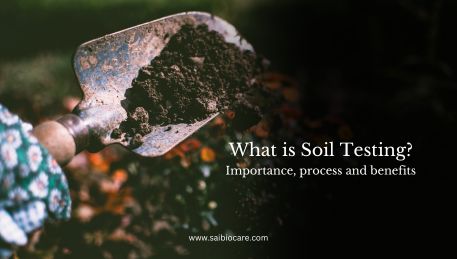Soil testing is a scientific analysis that evaluates the chemical, physical, and biological properties of soil. It provides insights into nutrient levels, pH balance, organic matter content, texture, and potential contaminants present in the soil. This information is crucial for farmers, gardeners, environmentalists, and construction professionals in making informed decisions regarding land use, crop selection, fertilizer application, and environmental remediation.
Importance of Soil Testing
- Optimizing Nutrient Management: Soil testing helps determine the nutrient content of the soil, enabling farmers to apply fertilizers in precise quantities and proportions. This prevents over-fertilization, reduces costs, and minimizes environmental pollution from excess nutrients leaching into water bodies.
- Improving Crop Yield and Quality: By identifying nutrient deficiencies or imbalances, soil testing assists in enhancing crop productivity and quality. Adjusting nutrient levels based on test results ensures that plants receive the necessary elements for healthy growth.
- Environmental Protection: It aids in preventing soil degradation and pollution by identifying potential contaminants such as heavy metals, pesticides, or excess salts. This knowledge is crucial for developing remediation strategies to safeguard ecosystems and water resources.
- Cost-Efficiency: Soil testing helps in cost-effective resource management by optimizing fertilizer use and reducing unnecessary expenses on inputs that may not be required.
The Soil Testing Process
- Sampling: The first step involves collecting soil samples from various locations across the area of interest. Samples are taken at different depths and locations, considering variations in soil texture, land use, and topography.
- Preparation: Once collected, soil samples are air-dried, cleaned of debris, roots, and stones, and then crushed to a fine texture for homogenization.
- Analysis: The soil samples undergo various laboratory tests. These include pH testing to measure acidity or alkalinity, nutrient analysis (nitrogen, phosphorus, potassium, etc.), organic matter assessment, soil texture analysis (sand, silt, clay), and potentially other tests based on specific requirements (heavy metal analysis, salinity, etc.).
- Interpretation: Upon completion of the analysis, the results are interpreted and presented in a comprehensive report. This report outlines the soil’s characteristics, nutrient levels, and recommendations for soil management practices. Recommendations often include fertilizer types, application rates, and timing for optimal crop growth.
- Action and Follow-Up: Based on the test results and recommendations, landowners or farmers can implement necessary measures such as adjusting fertilizer application, soil amendments, or land management practices. Follow-up testing may be conducted periodically to track changes and adjust management practices accordingly.
Benefits of Soil Testing
- Precision Agriculture: Soil testing facilitates precision agriculture, allowing farmers to apply inputs in a targeted manner, optimizing resources and minimizing environmental impact.
- Sustainable Land Use: By understanding soil health, landowners can adopt sustainable practices that preserve soil fertility and health for future generations.
- Improved Plant Health: Balanced nutrient levels support healthier plants, improving resistance to diseases and pests.
- Environmental Conservation: Proper soil management based on testing results helps in conserving water resources and reduces the risk of soil erosion and runoff, preserving the surrounding environment.
Conclusion
Soil testing stands as a fundamental tool for sustainable land management, agriculture, and environmental preservation. By providing crucial insights into soil composition and health, it empowers landowners, farmers, and environmentalists to make informed decisions that optimize productivity while conserving natural resources. Embracing soil testing as a regular practice not only benefits individual land users but also contributes significantly to global efforts toward sustainable and responsible land stewardship.

